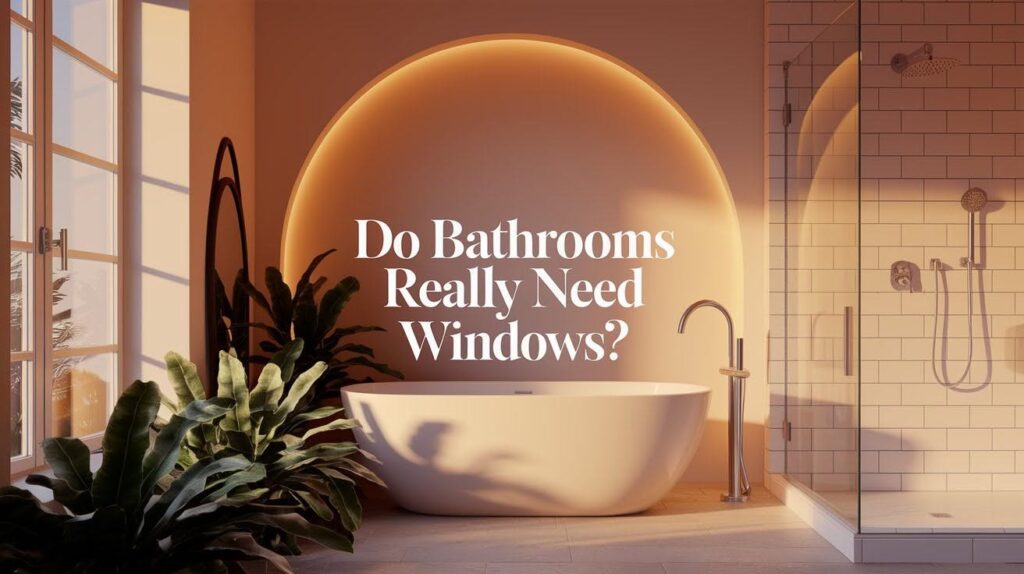Planning a bathroom renovation? That common question keeps popping up – do bathrooms need windows?
Here’s the straight answer: building codes don’t always require them, but you absolutely need proper ventilation. Without it, you’re looking at moisture damage, mold, and nasty odors.
The good news? You’ve got options that work just as well as traditional windows. Whether you’re dealing with a windowless powder room or an interior bathroom without exterior walls, there are solutions.
Natural window ventilation and mechanical exhaust fans both do the job – it just depends on your space, budget, and what you’re going for design-wise.
Don’t stress about it. We’ll help you figure out which option fits your specific situation. Your bathroom can be perfectly functional and beautiful, window or no window.
Why Ventilation in Bathrooms is Crucial
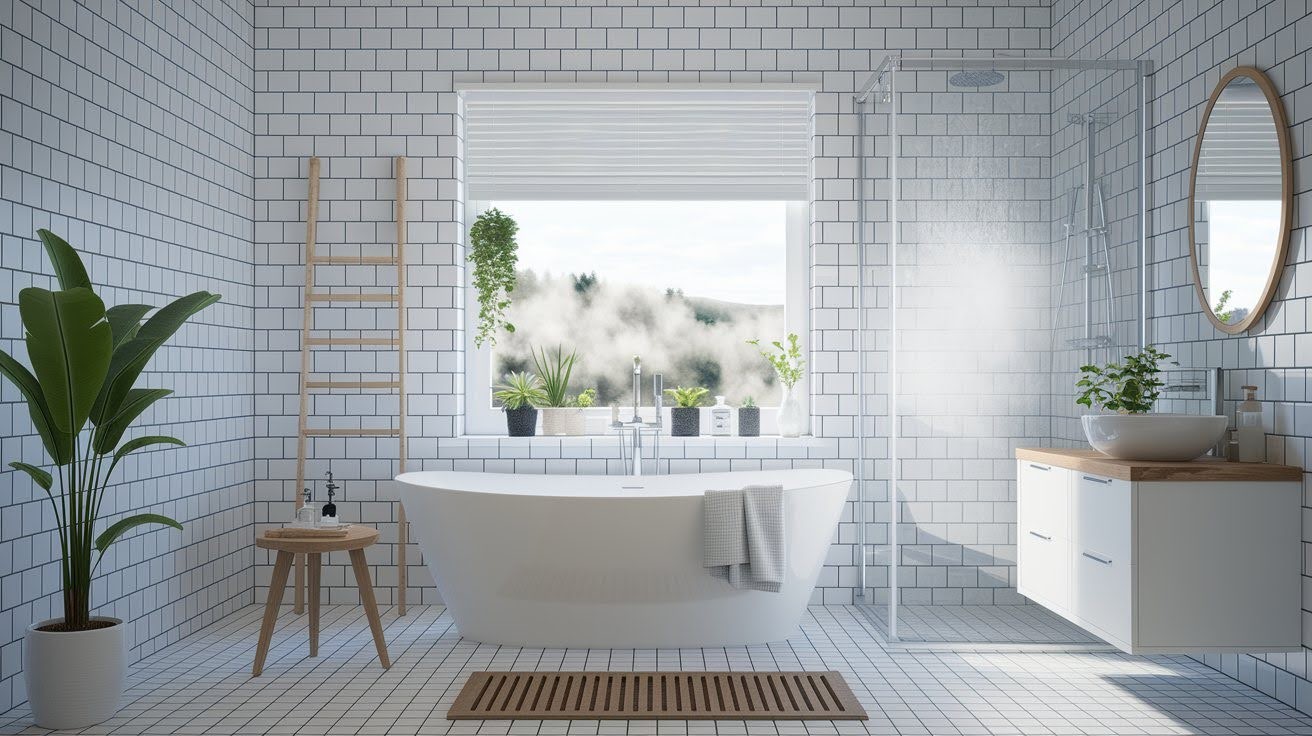
Bathrooms generate tremendous steam and humidity that create perfect conditions for mold and mildew growth without proper ventilation.
Poor airflow allows water vapor to penetrate walls and ceilings, leading to rotting wood, peeling paint, and expensive structural repairs over time.
Windows provide natural escape routes for humid air, allowing steam to exit directly outside instead of condensing on surfaces.
Proper ventilation also offers health benefits by preventing stagnant air from breeding bacteria, allergens, and odors that trigger respiratory problems in sensitive family members.
While exhaust fans effectively remove moisture when properly sized, they require regular maintenance, consume electricity, and provide no natural lighting benefits.
Fresh air circulation keeps bathrooms clean, healthy, and free from the moisture damage that plagues poorly ventilated spaces.
Benefits of Having a Window in Your Bathroom
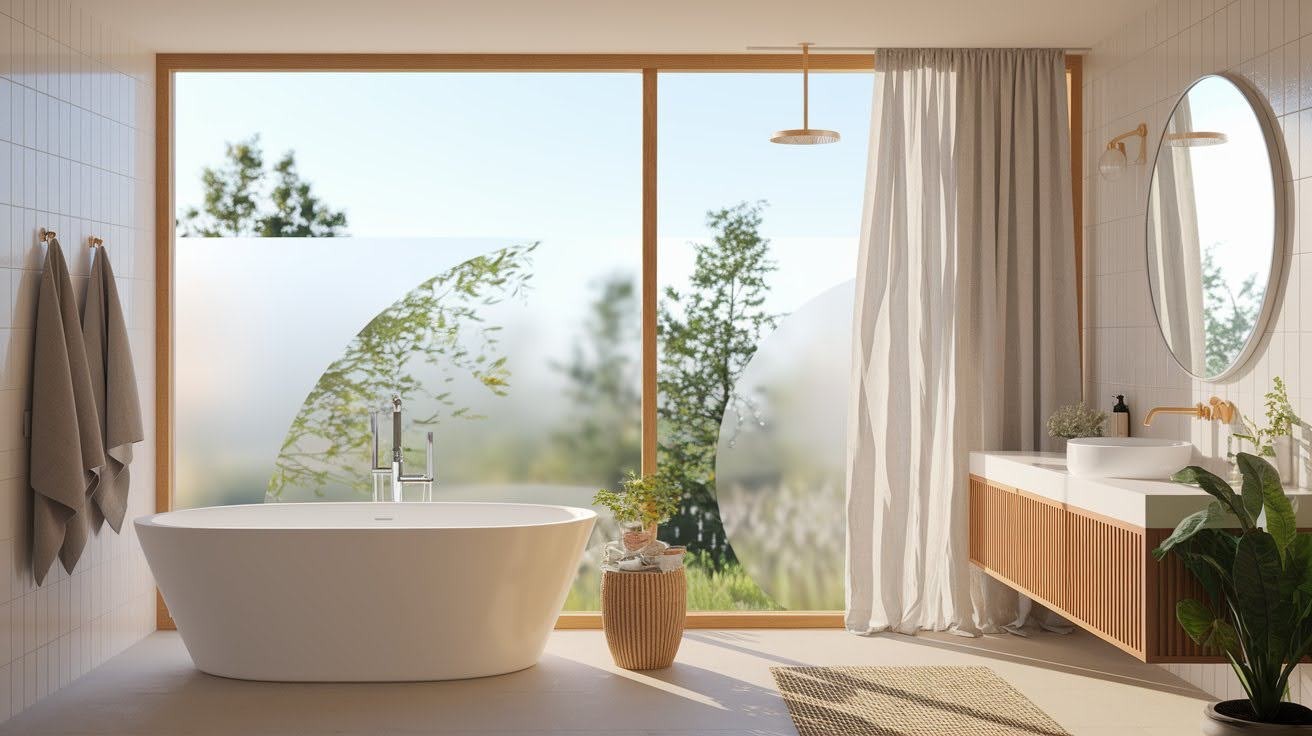
Natural Light
Natural light brightens bathrooms and creates an illusion of more space in small areas. You’ll reduce electricity costs and get better color accuracy for makeup application and clothing selection.
Improved Air Circulation
Windows create cross-ventilation that keeps bathrooms fresh during hot weather when fans struggle. Natural airflow reduces condensation buildup on mirrors and glass shower doors significantly.
Enhanced Resale Value
Home buyers prefer bathrooms with windows over windowless spaces consistently. Natural light and ventilation increase home marketability and potentially boost sale prices.
Additional Functional Benefits
Windows provide outdoor views while maintaining privacy through frosted glass options. This connection reduces closed-in feelings and makes daily routines more pleasant and relaxing.
Disadvantages of Having Windows in Bathrooms
Privacy Concerns
Bathroom windows create privacy challenges during personal activities, with shadows sometimes visible through frosted glass. Window treatments help but require frequent cleaning and can harbor mold in humid conditions.
Limited Placement Options
Windows require exterior walls, limiting fixture placement and potentially forcing awkward layouts. Existing window locations may not align with preferred bathroom designs, requiring expensive structural modifications.
Moisture and Draft Issues
Bathroom humidity causes condensation on glass and frames, leading to water damage over time. Windows create cold drafts in winter and allow moisture to escape through poor sealing.
Energy Efficiency Concerns
Windows lose heat in cold weather and allow heat gain in summer, increasing utility costs. Even double-pane glass remains less insulated than properly insulated solid walls.
Security Risks
Ground-level windows provide potential entry points for intruders, especially with privacy treatments obscuring views. Open windows for ventilation create security concerns in urban areas.
Maintenance Requirements
Windows need regular cleaning inside and out to remove soap residue and mineral deposits. Hardware requires periodic maintenance, while caulking needs regular inspection and renewal.
Cost Considerations
New bathroom windows involve significant costs for materials, installation, and structural modifications. Quality moisture-resistant windows cost more than standard options, with ongoing maintenance expenses.
Bathroom Window Types and Their Uses
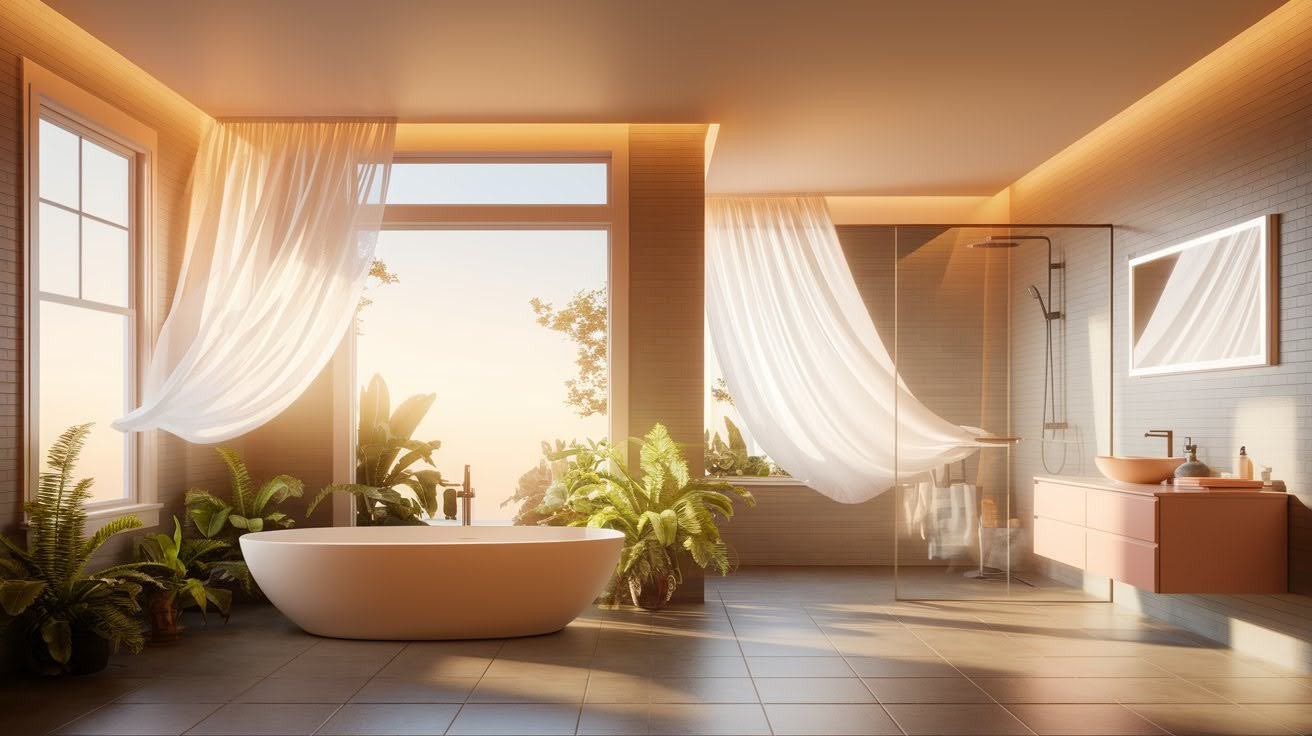
Double-Hung Windows
Double-hung windows open from top or bottom for flexible airflow control based on weather conditions. These compact windows clean easily from the inside and fit well in most standard bathroom layouts.
Sliding Windows
Sliding windows open horizontally, making them perfect for tight spaces above bathtubs or narrow walls. These affordable options provide ventilation and light while requiring minimal wall clearance.
Awning Windows
Awning windows hinge at the top and open outward, keeping rain out while providing ventilation. They work well in basement bathrooms or small spaces where privacy is important.
Picture Windows
Picture windows remain stationary and focus on bringing natural light into bathroom spaces. They work best when combined with exhaust fans for proper moisture control and circulation.
Best Materials for Bathroom Windows
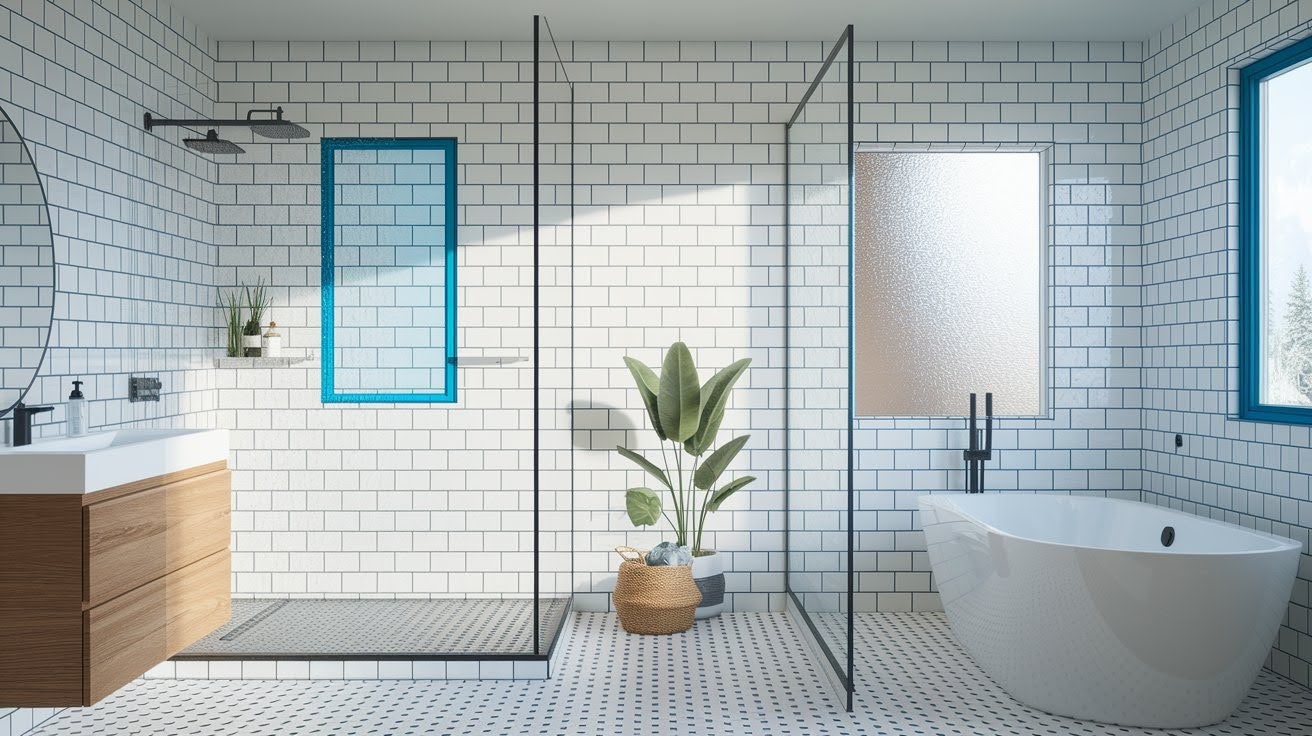
Vinyl Windows
Vinyl windows resist moisture, warping, and fading in humid bathroom environments. They require only occasional soap and water cleaning with no painting or sealing needed.
These windows maintain their appearance and functionality for decades without the constant maintenance that other materials demand.
Avoid Wood Windows
Wood windows expand and contract with humidity, creating gaps for moisture infiltration. High bathroom humidity causes wood to rot, warp, and provide breeding conditions for mold.
Even treated wood struggles against constant moisture exposure from daily showers and baths.
Safety and Privacy Glass
Tempered glass is required near showers because it breaks into safer pieces than regular glass. Frosted or textured options provide privacy while allowing natural light to enter.
Building codes mandate tempered glass within specific distances of bathtubs and shower areas for safety.
Acrylic Window Casings
Acrylic casings create watertight seals in shower areas and handle direct water exposure. They can match shower surrounds for a seamless, professional appearance.
Quality acrylic materials won’t degrade or allow leaks into wall cavities over time.
Can You Add a Window if Your Bathroom Lacks One?
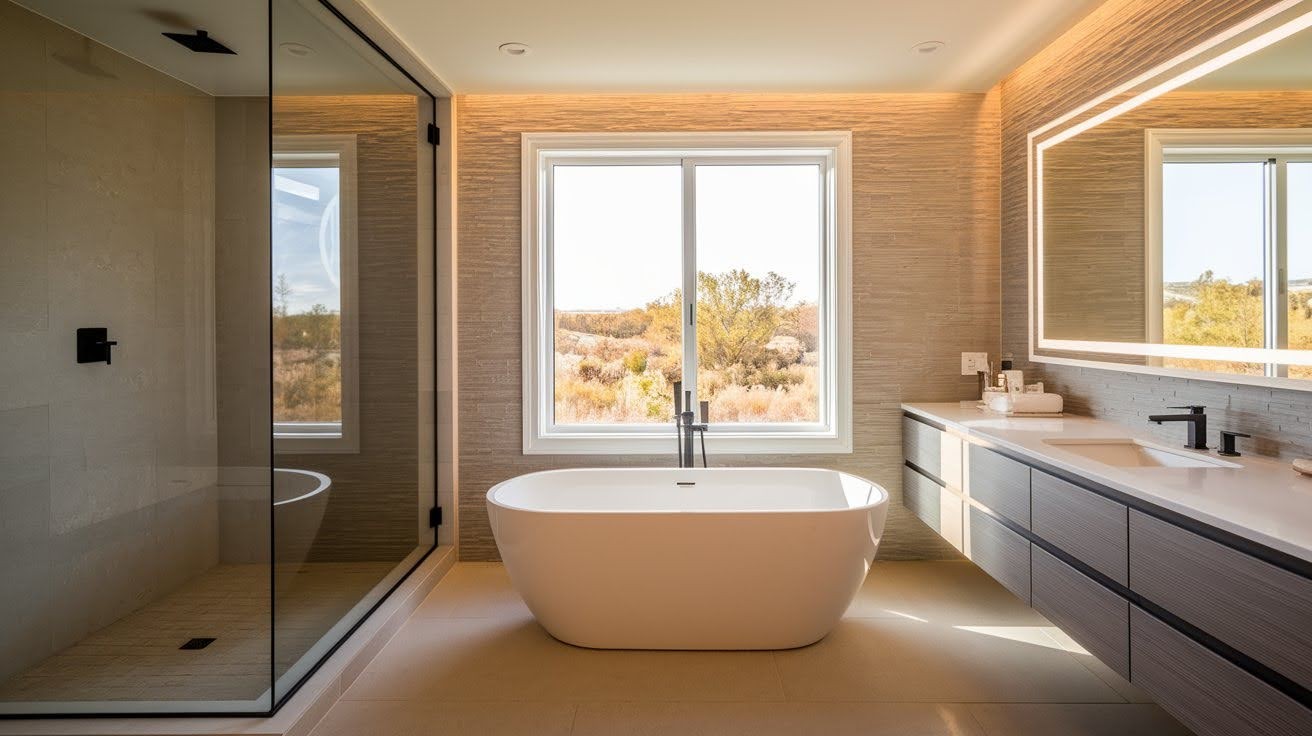
Adding a window to your windowless bathroom is possible when you have an exterior wall available.
This renovation requires cutting through the wall structure, proper waterproofing, and typically takes one to two days with required permits.
Professional installation ensures proper flashing and sealing to prevent water damage to your home’s structure.
Consider upgrading to vinyl frames for low maintenance and acrylic trim kits for watertight integration in moisture-prone areas.
Choose tempered glass for safety near bathtubs and showers, with privacy glass options maintaining discretion while allowing natural light.
Balance location, size, and style to provide adequate ventilation, privacy from outside views, and visual appeal that complements your design.
Windows vs. Exhaust Fans: Which is Better?
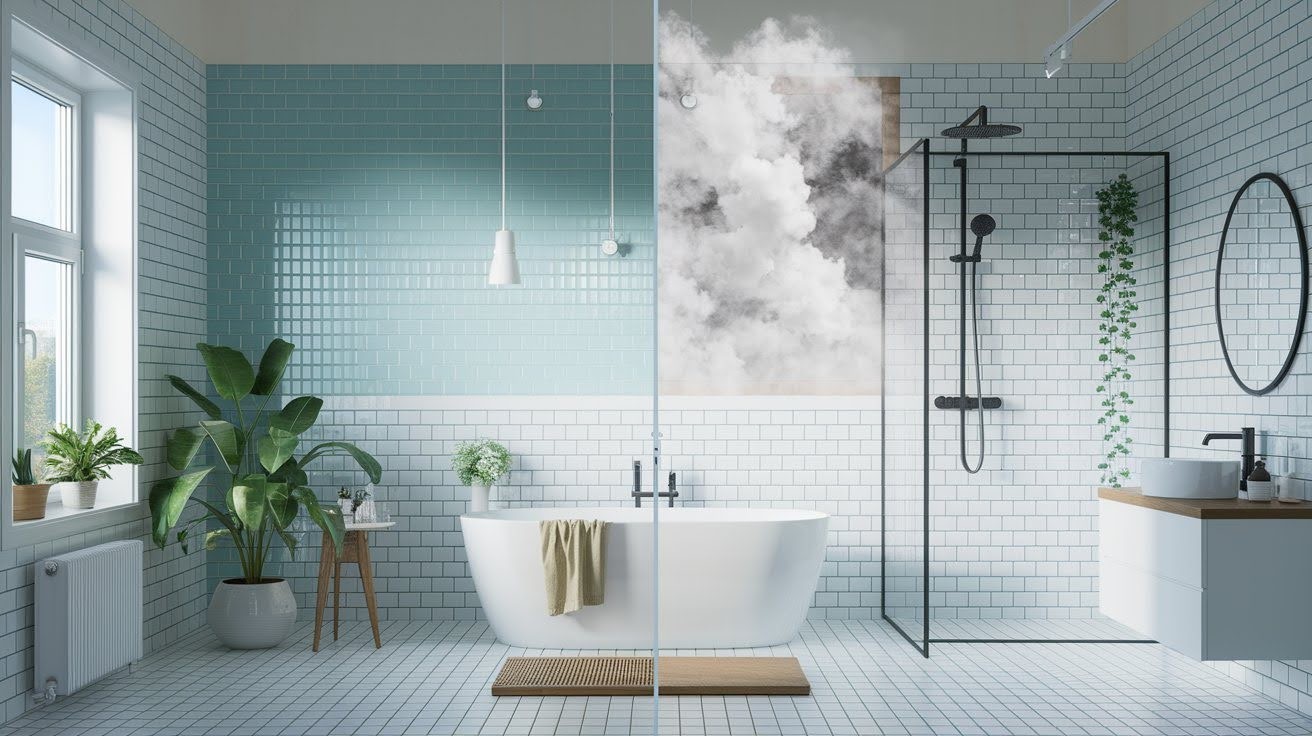
Windows
Pros: Windows provide natural light that makes bathrooms feel larger while reducing electricity costs. They offer energy-free airflow with minimal maintenance and add aesthetic appeal that increases home value.
Cons: Windows work less efficiently in humid climates where outdoor air contains high moisture. They require exterior walls, limiting placement options in interior bathrooms.
Exhaust Fans
Pros: Exhaust fans remove moisture quickly and effectively regardless of outdoor conditions. They work consistently year-round and can be sized precisely for optimal ventilation performance.
Cons: Fans provide no natural light and consume electricity with every use. They require regular cleaning, and motor failures leave you without ventilation until repairs are completed.
Conclusion
After years of bathroom renovations, here’s what I’ve learned – do bathrooms need windows? Not always by code, but they make your daily routine so much better.
Windows bring natural light, fresh air, and boost your home’s value.
But whether you can add one depends on three things: your local building codes, your bathroom layout, and what you personally want.
If your bathroom’s on an interior wall, you’ll need a good exhaust fan. Got an exterior wall? You’re in luck – you can choose windows, fans, or both.
My recommendation? Combine them when possible. Windows give you natural light and fresh air on nice days, while exhaust fans handle the heavy lifting when you need reliable ventilation.
It’s not required, but windows make bathrooms feel more open and pleasant. Your daily routine deserves that upgrade.
Frequently Asked Questions
Are bathroom windows required by building code?
Most building codes don’t require windows in bathrooms but do mandate proper ventilation. You can meet code requirements with either windows or properly sized exhaust fans.
Can I install a window in an existing windowless bathroom?
Yes, if your bathroom has an exterior wall, you can add a window during renovation. Professional installation ensures proper waterproofing and compliance with local building permits.
What type of glass should I use for bathroom windows?
Use tempered glass near showers and bathtubs as required by safety codes. Frosted or textured glass provides privacy while still allowing natural light to enter.
Do bathroom windows help with mold prevention?
Yes, windows provide natural ventilation that helps remove moisture and prevent mold growth. Opening windows during and after showers allows humid air to escape outside.
Should I choose a window or an exhaust fan for my bathroom?
Both options work well, but windows provide natural light and airflow while fans offer consistent moisture removal. Combining both gives you the best ventilation and lighting results.

